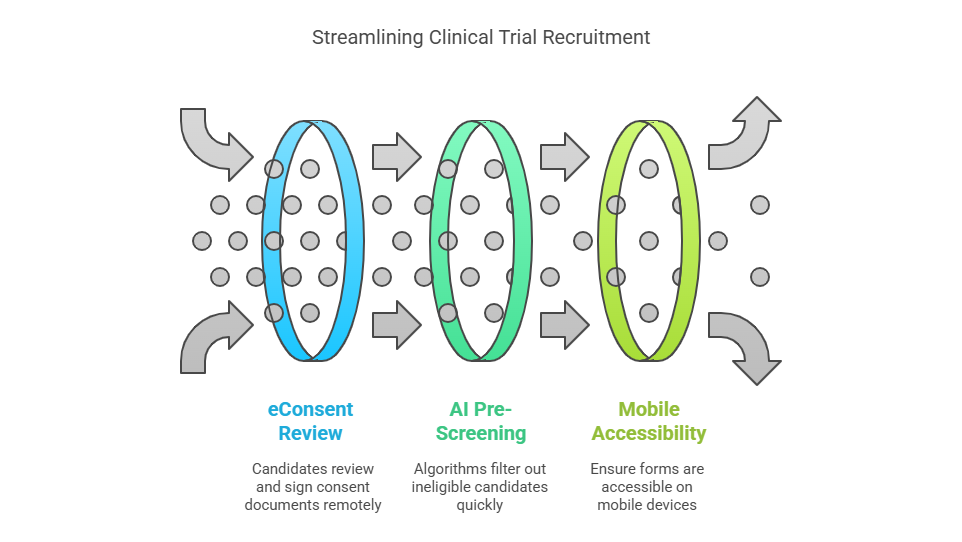Patient Recruitment Strategies for Clinical Trials: 7 Proven Methods
Clinical trials are the foundation of modern medical research. Without participants, however, even the most promising trial cannot move forward. Patient recruitment is one of the most critical and challenging aspects of running successful clinical studies. With increasing protocol complexities and regulatory demands, recruiting the right participants within a set timeframe is more difficult than ever.
This blog explores 7 proven patient recruitment strategies for clinical trials that researchers, sponsors, and clinical research professionals can implement to improve enrollment, retain participants, and ensure trial success.
Before diving in, it's helpful to understand the broader context of clinical research compared to lab-based studies. For a breakdown of their differences, check out our blog on Clinical Research vs. Lab Research.
1. Leverage Digital Marketing Campaigns
The modern patient journey often begins online. Using targeted digital marketing techniques can dramatically boost awareness and interest in your clinical trial:
Search Engine Advertising (Google Ads): Bid on relevant keywords like "clinical trials for diabetes in New York" to drive qualified traffic.
Social Media Campaigns: Platforms like Facebook, Instagram, and LinkedIn allow demographic and interest-based targeting.
Landing Pages: Develop trial-specific landing pages with easy eligibility quizzes and contact forms.
These tactics help pre-screen patients and direct high-intent visitors into your recruitment funnel.
2. Utilize Patient Registries and Databases
Accessing patient registries provides a direct pipeline to individuals already diagnosed with specific conditions:
Disease-Specific Registries: Tap into registries maintained by nonprofits, hospitals, or government institutions.
EMR Integration: Partner with health systems to query electronic medical records (EMRs) for eligible patients.
Data Privacy Compliance: Ensure all outreach follows HIPAA and GDPR regulations.
Registries save time and enhance precision in targeting suitable candidates.
3. Engage with Community-Based Outreach Programs
Local communities often provide untapped recruitment potential, especially among underrepresented populations:
Partner with Local Clinics and Pharmacies: Display flyers and train staff to refer eligible patients.
Attend Health Fairs and Community Events: Educate attendees about the importance of clinical research.
Cultural Sensitivity: Develop multilingual, inclusive materials that address community concerns.
This grassroots approach builds trust and increases trial visibility where it matters most.
4. Collaborate with Patient Advocacy Groups
Patient advocacy organizations are valuable allies in recruitment:
Trust and Credibility: Patients are more likely to respond to trial opportunities endorsed by trusted groups.
Outreach Channels: Advocacy groups offer newsletters, webinars, and social media reach.
Co-Creation of Materials: Collaborate to develop recruitment content that resonates with their audience.
Working with advocacy groups can bridge the gap between researchers and patients.
5. Implement Pre-Screening and eConsent Technologies
Streamlining the recruitment workflow can improve both enrollment speed and quality:
eConsent Platforms: Allow patients to review and sign informed consent documents remotely.
AI-powered pre-screening Tools: Use algorithms to filter out ineligible candidates quickly.
Mobile-Friendly Forms: Ensure your platform is accessible via smartphones and tablets.
Technology reduces dropout rates and enhances the patient experience from the start.
6. Involve Clinical Research Coordinators and Site Staff
Clinical Research Coordinators (CRCs) are instrumental in driving enrollment:
Relationship Building: CRCs often have strong rapport with site patients.
Protocol Familiarity: They understand inclusion/exclusion criteria and can identify suitable candidates efficiently.
Ongoing Engagement: Site staff can follow up with interested participants, answer questions, and schedule screenings.
A motivated and trained on-site team can significantly enhance recruitment success.
7. Offer Patient-Centric Incentives and Support Services
Making participation convenient and rewarding helps convert interest into enrollment:
Travel and Lodging Reimbursements: Eliminate financial burdens that prevent participation.
Compensation for Time: Fair compensation acknowledges the participant's commitment.
Flexible Visit Scheduling: Accommodate work, school, and family obligations.
Telehealth Options: Reduce visit frequency through remote monitoring.
Prioritizing patient needs improves satisfaction and retention throughout the trial.
Final Thoughts
Effective patient recruitment strategies combine traditional methods with innovative technologies and patient-first principles. By deploying these 7 proven methods, clinical trial teams can streamline enrollment, diversify their participant pool, and boost trial success rates.
For professionals interested in advancing their expertise in recruitment and clinical operations, training programs from organizations like CCRPS can provide comprehensive education and certification in clinical research roles.
If you're looking to enhance your qualifications, explore our article on the top skills every clinical research professional needs to succeed.
-
Patient recruitment ensures that a trial can begin, generate data, and achieve meaningful results. Without enough participants, trials may be delayed or terminated.
-
Lack of awareness, mistrust in research, complex eligibility criteria, and logistical burdens are key obstacles.
-
Digital tools such as eConsent platforms, EMR queries, and AI-powered screeners streamline the process and improve engagement.
-
They identify eligible patients, explain study protocols, build trust, and maintain communication throughout the enrollment process.
-
Compensation varies by trial and country. Many studies offer reimbursements and stipends to support participation.
-
Outreach to underserved communities, multilingual materials, and collaboration with advocacy groups can boost diversity.
-
It varies widely, but recruitment can take months or even years depending on the condition and study design.
-
Courses and certifications from organizations like CCRPS offer in-depth training for professionals in this field.



